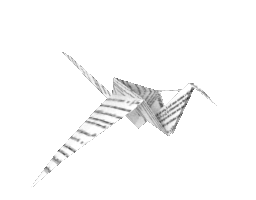Papers authored by Enrico Dall'Ara

Refreshing results…








E. Dall’Ara  ,
R. Eastell,
M. Viceconti,
D. Pahr,
L. Yang
,
R. Eastell,
M. Viceconti,
D. Pahr,
L. Yang
 ,
R. Eastell,
M. Viceconti,
D. Pahr,
L. Yang
,
R. Eastell,
M. Viceconti,
D. Pahr,
L. Yang
Experimental validation of DXA-based finite element models for prediction of femoral strength
Download from doi.org


2015
Yongtao Lu  ,
Maya Boudiffa,
Enrico Dall'Ara
,
Maya Boudiffa,
Enrico Dall'Ara  ,
Ilaria Bellantuono,
Marco Viceconti
Download from eprints.whiterose.ac.uk
,
Ilaria Bellantuono,
Marco Viceconti
Download from eprints.whiterose.ac.uk
 ,
Maya Boudiffa,
Enrico Dall'Ara
,
Maya Boudiffa,
Enrico Dall'Ara  ,
Ilaria Bellantuono,
Marco Viceconti
Download from eprints.whiterose.ac.uk
,
Ilaria Bellantuono,
Marco Viceconti
Download from eprints.whiterose.ac.uk


Ghislain Maquer,
Yongtao Lu,
Enrico Dall'Ara  ,
Yan Chevalier,
Matthias Krause,
Lang Yang,
Richard Eastell,
Kurt Lippuner,
Philippe K. Zysset
Download from onlinelibrary.wiley.com
,
Yan Chevalier,
Matthias Krause,
Lang Yang,
Richard Eastell,
Kurt Lippuner,
Philippe K. Zysset
Download from onlinelibrary.wiley.com
 ,
Yan Chevalier,
Matthias Krause,
Lang Yang,
Richard Eastell,
Kurt Lippuner,
Philippe K. Zysset
Download from onlinelibrary.wiley.com
,
Yan Chevalier,
Matthias Krause,
Lang Yang,
Richard Eastell,
Kurt Lippuner,
Philippe K. Zysset
Download from onlinelibrary.wiley.com





David Larsson,
Benoît Luisier,
Mariana E. Kersh,
Enrico Dall'ara  ,
Philippe K. Zysset,
Marcus G. Pandy,
Dieter H. Pahr
Download from www.researchgate.net
,
Philippe K. Zysset,
Marcus G. Pandy,
Dieter H. Pahr
Download from www.researchgate.net
 ,
Philippe K. Zysset,
Marcus G. Pandy,
Dieter H. Pahr
Download from www.researchgate.net
,
Philippe K. Zysset,
Marcus G. Pandy,
Dieter H. Pahr
Download from www.researchgate.net

Missing publications? Search for publications with a matching author name.